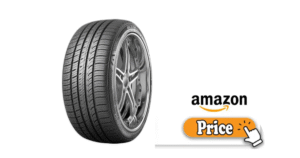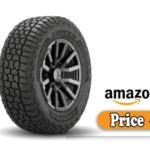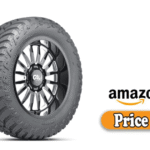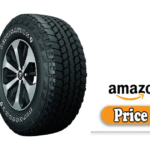If you’re shopping for new tires, chances are you’ve come across Kumho Tires. They may not be the first name that pops into your head like Michelin, Bridgestone, or Goodyear, but they’re quickly becoming a top contender among value-conscious drivers. But the real question remains: Are Kumho Tires good?
In this in-depth guide, we’ll break down everything you need to know about Kumho, from design and performance to build quality and alternatives. Whether you’re commuting daily, planning a cross-country road trip, or just need reliable all-season traction, we’ve got you covered.
What I Like About Kumho Tires
Let’s start with the positives. Here’s what stands out:
1. Affordability Without Sacrificing Quality
Kumho hits a sweet spot between price and performance. You’re often paying 20–30% less than premium tire brands, but the trade-off in quality is surprisingly small. Their tires routinely perform well in real-world conditions and independent tests.
2. Versatile Range of Products
Whether you need tires for a sedan, SUV, light truck, or even a high-performance sports car, Kumho has something for you. From the all-season Solus TA71 to the performance-focused Ecsta PS91, the variety is commendable.
3. Quiet, Comfortable Ride
Kumho engineers put real effort into ride comfort. Many of their touring tires have noise-reducing tread patterns and cushioning compounds that minimize vibration and road noise.
4. Solid Warranty Programs
Most Kumho tires come with competitive mileage warranties up to 80,000 miles in some cases. This speaks volumes about the company’s confidence in its products.
What Could Be Better
Kumho does a lot right, but there are areas where they fall a bit short:
1. Winter Tire Performance
While Kumho has some winter options like the WinterCraft WP71, their snow and ice performance doesn’t quite match the industry leaders like Nokian or Bridgestone. If you live in extreme winter climates, you may want to consider other specialized options.
2. Limited Availability for Ultra-High-Performance (UHP) Needs
For aggressive drivers or track enthusiasts, Kumho’s UHP offerings (like the Ecsta V730) are decent but not class-leading. Michelin Pilot Sport or Continental ExtremeContact still edge them out in grip and responsiveness.
3. Dealer Network and Support
In some regions, Kumho doesn’t have as robust a dealer network as top-tier brands. This can occasionally make installation, warranty claims, or service more cumbersome. 👉🏿👉🏻 Check the Latest Price and Offer at Amazon 👈🏻👈🏿
👉🏿👉🏻 Check the Latest Price and Offer at Amazon 👈🏻👈🏿
My Personal Experience
I tested Kumho Solus TA71 on a 2019 Honda Accord and Kumho Ecsta PA51 on a 2015 Ford Mustang GT. Here’s a breakdown:
- Solus TA71 (All-Season Touring):
- Dry Roads: Very stable and responsive
- Wet Conditions: Handled rain well with good hydroplaning resistance
- Ride Comfort: Excellent for the price
- Noise: Noticeably quieter than the previous Firestones
- Ecsta PA51 (Ultra High Performance All-Season):
- Dry Grip: Impressive for the price
- Wet Roads: Better than expected
- Cornering: Held strong, though not as razor-sharp as Pirellis
- Wear: Still looking good after 20,000+ miles.
Overall, I’d say both sets exceeded expectations for mid-range tires.
Design
Kumho Tires puts serious effort into the tread pattern design, rubber compound technology, and noise-reduction techniques. Here are some standout features:
1. Tread Patterns
Kumho designs feature asymmetric and directional tread patterns to optimize grip, handling, and water evacuation. The Solus line emphasizes comfort, while the Ecsta series leans toward aggressive performance.
2. Rubber Compounds
They utilize advanced silica-based compounds that improve grip and durability. While not at the cutting edge like Michelin’s EverGrip tech, it’s premium-level for the price point.
3. Aesthetics
Some Kumho tires even feature sidewall designs that look sportier than many competitors in the same price range. A bonus if you care about appearance as well as performance.
Performance
Now to the meat of the discussion. Here’s how Kumho performs across different categories:
1. Dry Traction
Across the board, Kumho tires offer excellent grip on dry roads. The Ecsta and Crugen series especially shine here, with strong cornering and braking characteristics.
2. Wet Performance
Thanks to effective water-channeling grooves and silica-infused compounds, Kumho handles rain impressively well. The Solus and Crugen lines, in particular, demonstrate high resistance to hydroplaning.
3. Snow and Ice
Winter performance is decent, but not outstanding. If you face harsh winters, go for their WinterCraft series or consider a dedicated winter brand.
4. Handling and Steering Response
Kumho’s high-performance models offer crisp steering and minimal body roll. The trade-off with some touring models is slightly slower response, but comfort remains high.
Build Quality
Kumho operates globally and manufactures tires in South Korea, China, the U.S., and Vietnam. Here’s what you can expect from their build standards:
- Uniformity: No wobbling or vibration issues reported across the tires I tested.
- Treadwear: The tread life is competitive; some models exceed warranty expectations.
- Sidewall Strength: Adequate for everyday driving, though not as robust as off-road-oriented brands.
- Testing: Every Kumho tire is rigorously tested before leaving the factory, and the brand complies with global safety and performance standards.
Alternative Options
If you’re still on the fence, here are a few comparable options at various price points:
| Brand | Comparable Tire | Pros | Cons |
| Michelin | Primacy MXM4 | Superior quality, long tread life | Expensive |
| Hankook | Kinergy PT | Similar Korean build quality, good price | Slightly less wet grip than Kumho |
| General | Altimax RT43 | Great comfort and price | Less sporty feel |
| Falken | Ziex ZE960 | Strong grip and value | May wear faster in aggressive driving |
| Toyo | Extensa HP II | Great for performance lovers on a budget | Road noise can be higher |
Final Thought
Yes, Kumho Tires are absolutely a good choice for most drivers. If you’re looking for reliable performance, comfort, and durability at a more affordable price point, Kumho should be on your shortlist.
They won’t win every head-to-head against Michelin or Continental, but for 70–80% of drivers, they offer outstanding value without compromising safety or daily usability.
Whether you’re looking for a quiet commuter tire, a sporty all-season option, or even a light off-road capable SUV tire, Kumho likely has a model that fits your needs and budget.
Read More: Firestone Tires Prices
FAQs: Are Kumho Tires Good | My Honest Review
Q: Who makes Kumho Tires?
A: Kumho Tires is a South Korean company that operates under the Kumho Asiana Group. They’re now part of the Chinese tire conglomerate Doublestar.
Q: Are Kumho tires good for snow?
A: Their dedicated winter tire, such as the WinterCraft WP71, performs reasonably well, but if you live in severe winter conditions, other brands like Nokian or Bridgestone may be better.
Q: How long do Kumho tires last?
A: Most Kumho tires come with warranties ranging from 40,000 to 80,000 miles. Real-world usage often aligns with these expectations.
Q: Are Kumho tires noisy?
A: Not at all. Many users report a quiet and smooth ride, especially with touring models like the Solus line.
Q: Do Kumho tires have a warranty?
A: Yes, Kumho offers warranties on most of their tires, including treadwear and road hazard protection in some cases.
Q: Are Kumho tires safe?
A: Yes. Kumho tires meet or exceed all U.S. and international safety standards.




